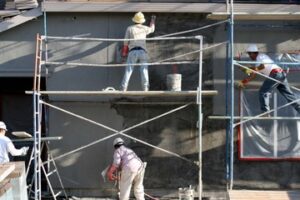When you move to a new place, it’s important to make sure that your utilities are properly disconnected and reconnected. This will help you avoid any unnecessary fees.

Moving companies offer a variety of services including transport, packing and storage. Some also disassemble and reassemble furniture for easier transportation. Visit Website to get further details.
Moving to a new place is an exciting time for many people. It is a chance to start over and create a life that aligns with your goals and desires. It can also be a great opportunity to save money on housing, maintenance, and utilities. In addition, a move to a new city may offer better job opportunities. However, it is important to research the local job market before making a move. You should also consider the cost of living and if it is affordable for your budget.
If you’re preparing to move to a new city, it is essential to hire movers that are properly trained and licensed. This is especially true when moving long-distance. You can do this by asking friends and family for recommendations or by searching online. If you’re unsure, it is always best to ask the company about their training process and other safety measures.
In addition to ensuring that the movers are qualified, you should also look into their licensure and insurance coverage. This is an important step because you’ll be entrusting them with your belongings, and it will help protect you from scams and poorly executed moves. In most cases, a reputable moving company will post these credentials on their website or provide them upon request.
Once you’ve found a moving company, it’s essential to communicate clearly with them about the details of your move. This will ensure that everything goes smoothly and avoid any misunderstandings. For example, you should confirm the date of your move and the delivery time. In addition, you should make sure that your home is ready for the movers’ arrival, including removing obstacles and preparing for weather conditions.
In addition to planning the logistics of your move, you should make a list of items that you want to bring with you and consider hiring a professional storage facility. It is also a good idea to get rid of any unnecessary items before you move. This will help you minimize the cost of your move and keep it stress-free. In addition, you should notify your utility companies of the change in address and disconnect and reconnect utilities as soon as possible.
Making New Friends
One of the biggest challenges when you move to a new state is building your social circle from scratch. Making new friends requires a combination of openness and initiative. This process can be stressful and time-consuming, but the benefits of a supportive network are numerous. Besides providing emotional support, friendships also expand your worldview through different perspectives and experiences. Furthermore, they can help you overcome the feelings of homesickness during the transition period.
Joining local groups and clubs is a great way to meet people with similar interests. Whether you’re into outdoor activities, books, or technology, there is sure to be a group that suits your needs. If you’re unsure where to start, ask your neighbors or local service providers like residential movers Florida from our network for recommendations.
Taking workshops on topics that interest you is another excellent way to make connections in a new city. For example, if you want to learn a new language, try enrolling in a local language course. Or, if you’re into crafts, find a workshop that teaches you how to make things like vases or flowers.
You can also attend cultural events, such as concerts, art and music festivals, or food and wine tastings. These events are a great way to meet people with similar tastes and interests. Moreover, they provide an opportunity to explore your new city and learn about its culture. Just remember to approach these experiences with an open mind and be willing to talk to strangers. You never know who could become your best friend!
Getting More Money
Moving is expensive, but there are several ways to get more money when moving. One is to hire professional movers, who can save you time and money while packing and unpacking your belongings. Another way is to move during the off-season, when movers are less busy and you can save money on rates. Finally, you can reduce costs by selling or donating items you no longer need.
During slow periods, movers can use the opportunity to roll out new services and update existing ones. This may include ancillary services, such as cleaning and junk removal, or insurance coverage that helps clients protect their valuables while they move. To promote these new offerings, movers can share content such as blog posts, YouTube videos, and social media updates to drive traffic and awareness.
In addition, movers can use slow periods to boost referrals and build brand loyalty. They can offer incentives to their best partners, such as gift cards or discounts on future service, and create an easy-to-use affiliate portal that streamlines the process. They can also analyze their referral data to identify their top performing partners and send them regular follow-up reminders.
It is a good idea to book movers well in advance. This will help you avoid high-demand prices and ensure that they are available when needed. Additionally, it will give you the opportunity to negotiate a better rate. Moving companies set their rates by the hour, load or truck size and mileage, so it is important to compare options and choose a company that fits your budget.
Getting a Better Mental State
Many people find that moving to a new place can have positive effects on their mental state. This could be because of the fact that they’re leaving behind a familiar place and traveling somewhere new, or because they’re getting more space to move around in their home, or because they’re living closer to their friends and family. Whatever the case may be, it’s important to hire movers well in advance of your move so that they can take care of all the logistical details for you. This will leave you more time to focus on emotional self-care and adjusting to your new location.







